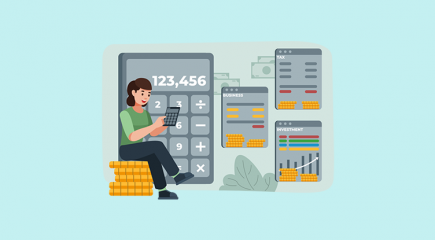The inventory turnover ratio, also referred to as inventory turns, stock turnover, or stock turns, is an efficiency metric that shows how long a business takes to sell all its inventories over a given period. The inventory turnover also measures the liquidity of a company’s stock, which helps the business managers to establish a way to control inventory levels, leading to an increase in sales. It also helps in decision making for better purchasing, manufacturing, pricing, and marketing.
What is Inventory?
A business inventory is a good offered for sale. These could be raw materials, work in progress, components of a product, or finished items. They are all recorded as assets on the business balance sheet.
Components Affecting Inventory Turnover
- Stock purchasing: If a company purchases large amounts of inventory during the year, it will need to sell a big part of the excess inventory to increase turnover. If it fails to sell the stock, it will incur holding cost and storage costs.
- Sales: Sales have to equal the stock purchases. If not, the inventory turnover will not be sufficient.
Formula
To calculate the inventory turnover ratio use the total cost of goods sold by a business over a given number of days divided by its inventory’s average for a given period.
Inventory Turnover Ratio = Cost of Goods Sold / Average Inventory
Example
If a business has an annual cost of goods sold worth $150,000 and $50,000 in average inventory:
ITR = $150,000 / $50,000 = 3
The business turned over its inventory three times. Cost of goods sold (COGS) is derived from the income statement or computed from the balance sheet using the formula below.
Cost of Goods Sold = Initial Inventory + Inventory Bought During the Period – Closing Inventory
Since the company’s inventory levels varies throughout the year, the average inventory is used instead. For instance, if a company purchases stock that is to be sold throughout the year, the stock levels will be different at different time periods during the year. The company’s average inventory will be calculated by adding the initial inventory to the closing inventory and dividing it by two.
Interpreting the Ratio
Higher inventory turnovers are desired as it shows that the business can manage and efficiently sell its inventory. The faster the company can sell its inventory, the lesser the amount of money tied up in unsold inventory. A higher inventory turnover ratio also means higher sales with high profits. However, companies with a high inventory turnover must be thorough to ensure they do not run out of stock. A very high inventory turnover rate could reveal a price increase opportunity since the demand is high.
A low turnover ratio could mean a company is holding slow-moving or obsolete inventory with low demand or it is difficult to sell. The company’s capital is tied up in excess inventory, and it may eat into the profit if it gives a discount to maintain or boost sales. There are a number of times the company could be holding on to the inventory for a reason. For example, a retailer could be anticipating high sales in the coming holiday season, or the supplies are closing down for a holiday or a strike.
Importance of Inventory Turnover
Since the ratio measures how effectively a business can control its inventory management, it is good if the turnover is high. A high turnover means the company is not overspending and incurring unnecessary costs on storage. It means the company can effectively sell its inventory.
It is also a good measure of liquidity. Inventory forms the most significant assets a company owns. If the company cannot sell it, then it is not worth a lot. The ratio shows how easily the company’s inventory can be converted into cash. The ratio is also significant to bankers as it shows how easily the inventory can be sold. Inventory is mostly used as collateral.
How to Improve the Inventory Turnover Ratio
- Project the demand in advance: Goods are not always desired or wanted by consumers. It is wise to plan and forecast the market to ensure that the business makes sales. It can be done using software or manually. The business’s previous historical data can also be used to come up with specific trends. The inventory turnover ratio will improve as the inventory purchases will correspond to the demanded number.
- Evaluate pricing strategy: A high price of the goods sold can lead to low sales. By creating an effective pricing strategy, all factors that influence value have been incorporated. It includes raw materials, manufacturing expenses, and competitors’ rates. A smart action is needed when pricing to ensure a high return on investment and inventory turnover ratio.
The inventory turnover ratio is a vital efficiency ratio used to determine how much sales a company makes compared to its inventory. The financial ratio gives insight into the business’s financial efficiency and holding cost. It helps the company better manage utilities, rent, insurance, inventory, labor, and other costs.


